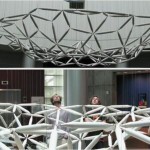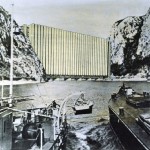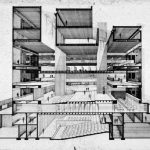In the late 1840s Charles Wheatstone developed a moving mechanical model for demonstrating wave properties of light and sound. It displayed both vertical and horizontal waves with varying differences of phase. Wave-shaped wooden sliders moved along the axis causing bead-wire units (with both vertical and horizontal components) to move in a wave motion. This is a very brief, incomplete demonstration of the Wheatstone wave machine in action. References: Rudolph Koenig’s 1889 catalogue, no. 263b Julian Holland (2000). “Charles Wheatstone and the Representation of Waves, Part 1 & 2, Rittenhouse, vols. 13, 14, pp. 86-106, 27-46.





Leave a Reply